PREFER A FREE QUOTE FOR MEASURE & INSTALL?
Steps
Determine your lock side
Measure the width
Measure heights
Measure lock
 Make your own deductions
Make your own deductionsTRACKING
Our doors have industry standard top and bottom rollers, you must have suitable tracking to accommodate these rollers.
 Top H Track - Sliding
Top H Track - Sliding Top Sliding Track
Top Sliding Track BOTTOM PIP TRACK
BOTTOM PIP TRACK  Top Track - U Channel
Top Track - U ChannelUNSUITABLE TRACKING
Note: Even if your tracking is pictured below there are still options to install a sliding screen door; take photos, give us a call and we'll endeavour to find the simplest solution.
 Wunderlich hanging top track
Wunderlich hanging top track Arrowhead bottom track
Arrowhead bottom track Cold room hanging track
Cold room hanging track Unsure? Call for help
Unsure? Call for helpTHE LOCK SIDE IS DETERMINED FROM THE OUTSIDE LOOKING IN
Lock Side: Stand outside with the glass doors in the closed position, ascertain if the door is locking to the right or left hand side.
Door Widths: Measure the entire distance between the inside of the receiving channel (1.1) to the far side of the receiving interlock (1.2) that is located on the fixed glass panel. Add 70 mm and divide this number in two to give you your individual door sizes.
Note: We add the 70 mm as the doors will overlap in the centre and you will have less visual impairment if the two door frames are in line rather than a total of 140 mm.
 1.1
1.1 1.2
1.2
Door Heights: Measure from the top of the bottom track to the bottom of the top track or the base of the top U channel and deduct 12 mm as per diagrams below. Measure at several points to be assured that there is no great variation. Use the shortest measurement for all.
If a variation of more than 4 mm exists this may result in the door not sliding properly, and additional tracking may have to be installed to make tracks parallel.
 1.3
1.3 1.4
1.4Lock Height: Use the existing lock height if desired; first make sure that the new handle will not interfere with the existing glass door handle, do this by referring to the Lock Above & Lock Below instructions at the bottom of the page. Or, measure from the bottom of the existing screen door up to the centre of the existing striker, this will be the centre of the new striker and screen door handle.
Interlocks
The two sliding stacker doors will have to be connected, to open and close using the active door (the one with the lock) and interlock in the closed position. This is done by using a frame interlock (1.5) on the back of the active door and the non-active door. The non-active door and the fixed glass panel (1.6) frame also have a receiving interlock so that the connection is made during the opening and closing process and when the doors are in the fully locked position. In most cases you will need a 3 mm offset interlock for this purpose, however not always.
 1.5
1.5 1.6
1.6
This will enable anyone closing the doors to pull the active door from the lock handle and as it slides into the fully lock position. When the locked position is in place it will mean that the back of the non-active door will be locked into the fixed glass panel on one side and interconnected with the other door in the middle and locked into the closing channel on the locking side.
No Receiving Interlock?
You need to purchase and install a receiving interlocks for sliding stacker screen doors. Using the guide below ascertain what size receiving interlock you will require to suit your tracking then select this interlock as an Addon at Step 3 of the Product Builder.
Measuring for a Receiving Interlock
If your doors do not have a receiving interlock on the fixed glass panels then it is necessary for you to install them, there are three different sized receiving interlocks:
 Interlocks
InterlocksIdentifying precisely which receiving interlock is most suitable to your doors can be done using the following methods:
If the distance from the centre of the bottom track to the face edge of the fixed glass panel frame (1.7) is greater than 20 mm then a 7 mm offset interlock is required.
If the distance from the centre of the bottom track to the face edge of the fixed glass panel frame (1.7) is less than 20 mm and greater than 16 mm then a 3 mm offset interlock is required.
If the distance from the centre of the bottom track to the face edge of the fixed glass panel frame (1.7) is less than 16 mm then a flat interlock is required; if you find that you require a flat interlock you must add 10 mm to the width of each screen door.
 1.7
1.7
Lock Height: Take your lock measurement from the top of the bottom track, to the centre of where you want your lock handle. This will also be the centre of middle lock striker.
This measurement needs to be a minimum of 120 mm above the top of your existing solid door lock (1.8) or 60 mm below the bottom of your existing door lock handle (1.9).
THE LOCK SIDE IS DETERMINED FROM THE OUTSIDE LOOKING IN
 1.8
1.8 1.9
1.9
 Make your own deductions
Make your own deductions Top H Track - Sliding
Top H Track - Sliding Top Sliding Track
Top Sliding Track BOTTOM PIP TRACK
BOTTOM PIP TRACK  Top Track - U Channel
Top Track - U Channel Wunderlich hanging top track
Wunderlich hanging top track Arrowhead bottom track
Arrowhead bottom track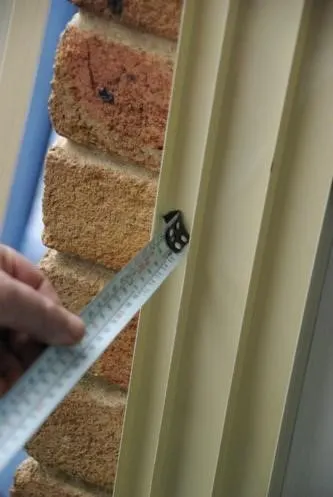 1.1
1.1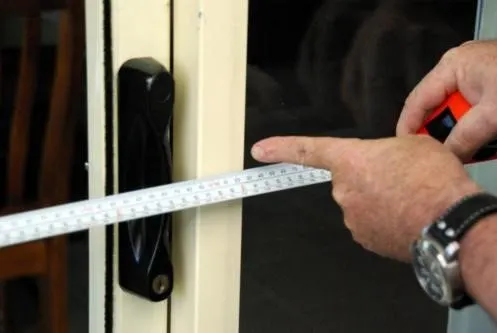 1.2
1.2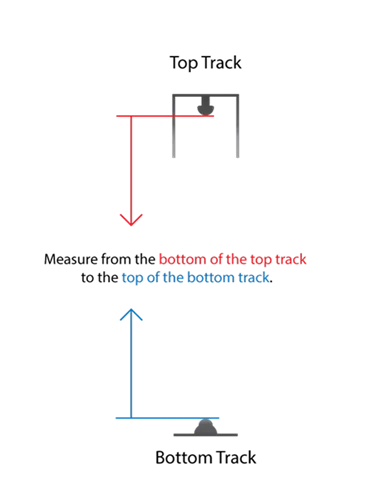 1.3
1.3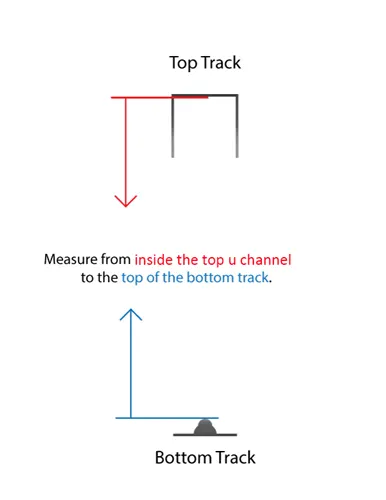 1.4
1.4 1.5
1.5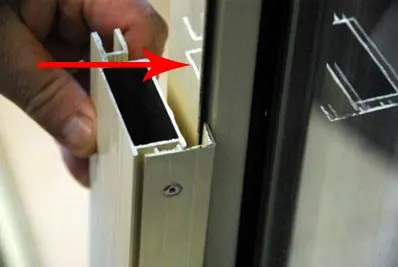 1.6
1.6 Interlocks
Interlocks 1.7
1.7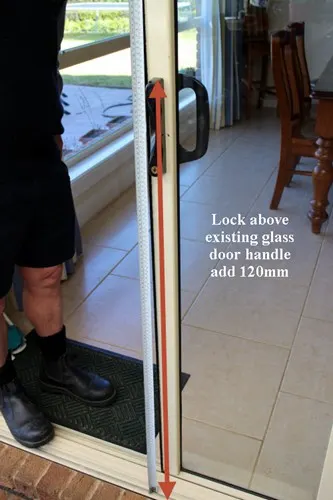 1.8
1.8 1.9
1.9